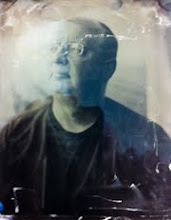Today I'm writing about liberation - from the tyranny of a bad back, from the tyranny of always having to have a reason or plan to make photographs and from the tyranny of self-contained compositions.
Today was the first time in a couple of weeks that I've been out and about in the forest after I seriously put my back out. It was glorious to be back outdoors, walking comfortably and seeing things with fresh eyes.
There have been plenty of times that I plan to go walking the trails, and find myself leaving the house hours later than I had intended. So often the delay is related to trying to decide which camera(s) I want to take with me to which location(s); deciding between digital or film or both; black and white or colour; etc etc. This morning I felt a strong urge to shoot some film, but I had a stronger desire to get out and it was liberating to just grab my little Canon compact digital camera. More important to get out walking with any camera than get frustrated by having to make decisions. And the choice was perfect for the purpose - I didn't have a specific plan in mind for what images I wanted to make, rather I just wanted to be able to document my enjoyment of the walk as it unfolded. I think this represents the most basic, fundamental motivation I have for making images - to help me record what I see and by doing so sharpen my eye to what is right before me.
Before I went out to the forest, I stopped in at Lúz Gallery to visit with my friends Diana and Quinton, with whom I've had many enlightening conversations about art. I enjoy these visits for many reasons; it's refreshing to see photographs that are physical objects, to consider the choices the artists have made with respect to size, materials, presentation and to consider why some images are more compelling than others. While talking with Diana and Quinton today, we shared a number of ideas about composition as it comes into play with single images, series of images, and book design.
In many ways, I'm glad that I did not return to photography as a medium of expression before first taking detours through papermaking, printmaking, painting and drawing. Every step of the way I learned valuable lessons about composition. One key idea that I always keep in mind is that the image should not be composed so that everything is within the frame but rather it should be composed to give the sense that the image continues beyond the confines of the frame. In most instances I want the viewer of my images to start somewhere within the frame, and follow the visual cues to the edges of the frame and then beyond the frame. Requiring the use of the viewer's imagination to complete the image beyond the frame results in a level of engagement with the image and an expanded experience of the photograph. Thinking about this now, I understand why I often make square images - without the cue of a "landscape" or "portrait" orientation of the rectangular frame, there's less chance that the image will be constrained by the frame itself, and less chance that the viewer's imagination will in turn be constrained.







1 comment:
Paul, I'm sorry to hear that you were having trouble with your back, and delighted to hear of your liberations! All three combine so beautifully in these photos, this work from your heart. And I can't help noticing your wonderful use of color, which to my eye is uniquely yours in any medium you use.
Post a Comment